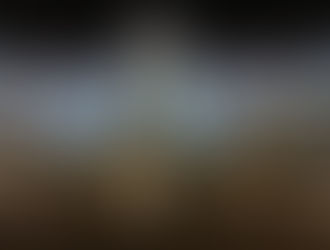Digital Graffiti and the future of street art
- isobelaraujo
- Dec 18, 2018
- 3 min read

"A mobile phone is employed as a virtual spray can. A drawing client on the mobile phone (the virtual spray can) communicates wirelessly with a drawing server on a standard PC for the purpose of painting on a virtual canvas. The canvas is projected with a video projector onto some backdrop. !e projection distance and surface determine the scale, appearance and visibility of the resulting artistic presentation. MobiSpray is truly ubiquitous, as the equipment can be carried in a rucksack, allowing the creation of ephemeral digital art anytime, anywhere, and on anything" - Jürgen Scheible & Timo Ojala, MobiSpray: Mobile Phone as Virtual Spray Can for Painting BIG Anytime Anywhere on Anything
The year is 3018. You're hoverboarding home along the riverfront, and as you stop to grab a snack from the 7/11 gondola, you see some teens laughing and digitally tagging the underside of the ruins of Trump tower, with what appears to be a aggressively colorful light show of tags, phrases, images, and inside jokes.
Maybe this vibrant digital future isn't so far off. On September 29th, the world's largest and longest-running digital art display opened in Chicago. Abstract video art from internationally recognized artists, projected onto the side of the Merchandise Mart, a building so large that it used to have its own zipcode. A large crowd of people of all ages gathered on the opposite riverbank to experience the show, a curated video art exhibition featuring the work of internationally renowned artists Jan Tichy, Zheng Chongbin, Diana Thater, and Jason Salavon. Abstract, rhythmic patterns and shapes washed over the side of the building in rapid succession. Then, peaceful footage of elephants, lions, and giraffes abruptly replaced the abstract shapes. While surreal, the overall curation and effect felt somewhat stale and out of touch with the urban context within which the art had been placed. Compared to the originality and vibrancy of art that typically appears on the sides of buildings (eg. graffiti), expectations somewhat fell flat, despite the fact that this piece had the advantage of a huge canvas, as well as moving, rather than static, images.
Despite the somewhat unsatisfying delivery, there is no doubt that the implications of this project are exciting. What makes this experience significantly different from the visual experience of, say the bombardment of screens and lights you might find in Times Square or the neon displays in Tokyo's Ginza district, is that this is purely for the sake of art, rather than advertising, and that it is a projection of light onto another surface, rather than a surface (like a screen) that was specifically made to project light. This demonstrates two things- that there is a role for digital displays in urban landscapes free from commercial interests (I would also argue that there is an expanding role for privately commissioned public art that co-opts the graffiti aesthetic to advertise businesses, but I'm saving that topic for a separate post), and that street art has an emerging, mobile, and "lower-risk" alternative to the spray can.
There is already a substantial body of literature on "digital graffiti". For example, the Digital Graffiti Festival at Alys Beach in Florida is already in its 12th year, with various examples of digital graffiti projects popping up worldwide. A google trends analysis shows that searches of the phrase "digital graffiti" actually peaked in 2004, with the most searches coming from users in Mexico. However, actual examples of projections of art in urban settings are still not commonplace.
The potential for the radical subversion of this practice is exciting- though at the moment, the need for tech and digital skills still seems like it would be a barrier to entry for this particular art form. Furthermore, the need for relative darkness in order to see the display presents an exciting opportunity for activating streets at night through art. Some, like the artist Scheible and educator Ojala quoted at the top of this post, are already testing and exploring digital graffiti tools - replacing the spray can with the mobile phone and projector, while preserving the original canvas.


























Comments